Search Results for 'Willie Henry'
12 results found.
A man who kept the story of Galway alive

The great stories have always found their way down to those who appreciate them the most. The cave writings, the hewed and smoothened tablets, the leathery books that fill the most treasured libraries; the tiny lead-made print of the 18th and 19th century newspapers.
An American barber shop in Eyre Square
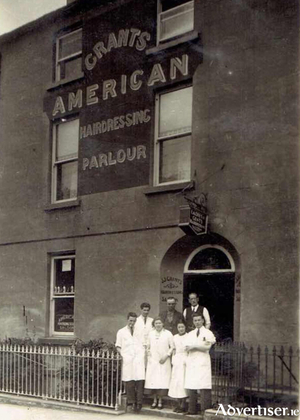
John Joseph Grant emigrated to Brooklyn in New York where he learnt the haircutting trade and obviously made enough money which enabled him to come home in 1912 and set up his own business here. He also picked up quite a few tips on advertising as well, as you can see from our illustration which was published c1913. In addition to being a skilled barber, he certainly was not shy about promoting his wares – his advert is full of superlatives. “I guarantee to cure dandruff – the most modern and up-to-date barber’s shop in the Provinces – shaving soap solely manufactured by J.J. Grant – you will never get bald if you use Grant’s Imperial Hair Tonic (He must have sold this product out as he himself went bald in later life).
St Patrick’s National School
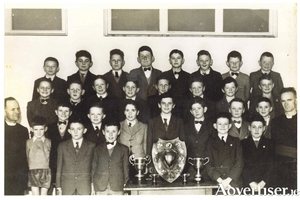
On January 15, 1827 two Patrician Brothers, Paul O’Connor and James Walsh, took up residence in Lombard Street and set up the Monastery School. The attendance on that first day was 300 boys, many of whom had little interest in learning because they were poor and hungry. So the Brothers set up The Poor Boy’s Breakfast Institute in May 1830. It continued seven days a week, 365 days a year for many years after the founders' time. The breakfast consisted of porridge with molasses or treacle, and during the Famine, they fed 1,000 boys every day. The ‘Old Mon’ became a vital cog in education in Galway.
A night of terror
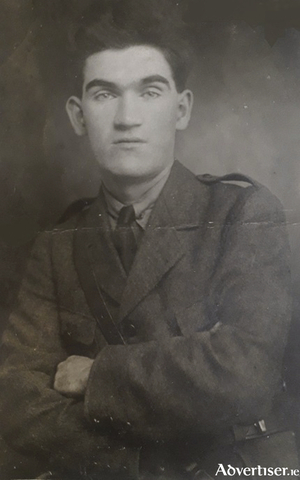
In November 1920, Jimmy Folan, aged 20, of O’Donoghue Terrace, Woodquay, was sentenced by court martial to six months imprisonment with hard labour for acting as a republican policeman and possessing seditious documents – one of which blamed the local RIC for the killings of Seamus Quirk and Seán Mulvoy. Having served his time, he was released on May 10, 1921. That evening, a benevolent RIC sergeant warned a local volunteer to tell Jimmy ‘not to be at home tonight’.
Fairies and pookas in The Claddagh
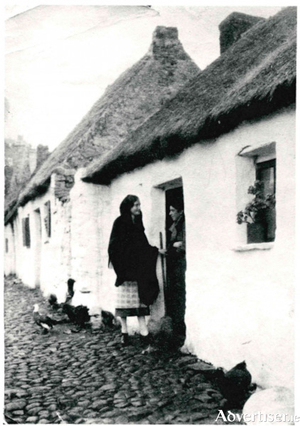
These two women are chatting at the doorway of a Claddagh house on Dogfish Lane c1920. The lane is cobbled, the geese and hens are pecking around, the thatch roof is perfect, there are flowers on the windowsill, everything is calm and peaceful, but what are they talking about? Could it be about piseógs, about the ‘good people’, the fairies, the banshee?
Hynes’ shop, a brief history
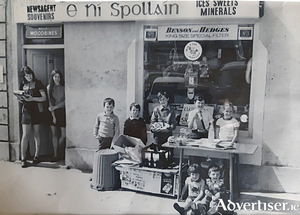
In the 1920s a family named Healy from College Road built three houses on Forster Street. The owner of the first house (next door to Harry Clare’s stonemason’s yard) was a Jewish man named Isaac. He did piano repairs and his daughter was an opera singer. He worked from a shed at the back of the house. In the 1930s he sold the house to John McDonagh from Glann near Oughterard, who was married to Mary Anne Spellman from Fermoyle. They opened a grocery shop and a lending library.
Menlo oarsmen
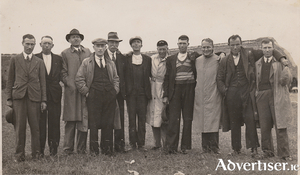
One of the great sporting achievements of the last century was the remarkable success of a group of Irish speaking farmers and local men from Menlo. During a very wet spring when they could do little work on their farms or on the bog, as they watched rowing crews going up and down the river, a group of them decided to form a rowing club. They asked to become members of Menlo Emmetts Hurling Club and adopted the name. Many of them would have spent a lot of time on the river, but that did not mean they knew how to handle a racing boat. When they took their clinker out for the first time, it took them a good while to steady the boat. A local man watching, described them as “The Wobblers” and this name stuck for a few years.
Galway and the Great War 1914-1918
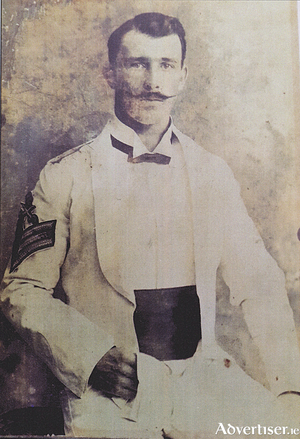
On August 4 1914, Lt Col Henry Jourdain, Commander of the Connaught Rangers in Renmore Barracks, Galway, received mobilisation orders which changed the lives of thousands of families throughout the city and county. Urgent appeals for recruits were sent out. Hundreds of young men began arriving from all over Connacht. Temporary military camps were set up outside the barracks to cater for the recruits.
Persse’s Distillery
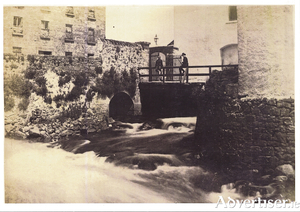
For much of the 19th century, the Persse family ran one of the most successful distilleries in Ireland. Their product became world famous. They were major contributors to the industrial life of Galway and provided much needed employment. In addition to their staff, they were also supplied by a number of artisans working in the Nuns Island area — coopers, cork manufacturers, printers, carters, case makers, etc.
98’s — Under-16 Street League champions, 1968

In 1893, a Bohermore hurling club was affiliated to the County Board. There was a strong nationalist tradition in the area and so the club evolved into Bohermore 98’s in honour of the centenary of the 1798 rebellion. The guiding lights of the club were Jim Tonery, Paddy ‘Ham’ Ruffle, and John Crowe. The club forfeited a County Championship in 1903 when one of their players was sent off. The team protested at the injustice of the decision and walked off the pitch. Their clubhouse was in Bohermore on a site that was later occupied by “Monto’s Shop” and is today covered with townhouses.

